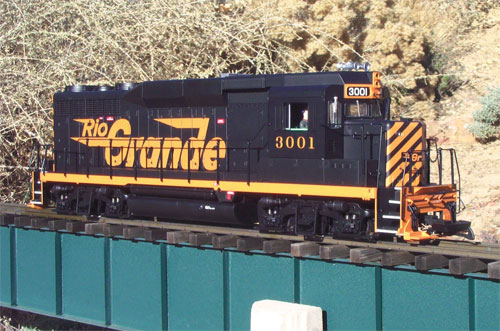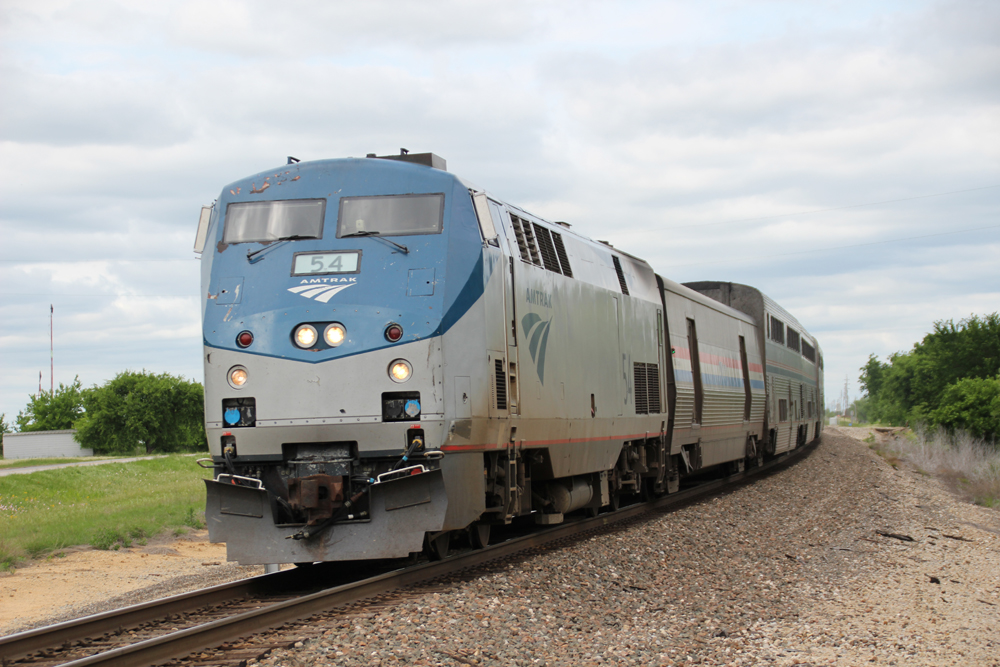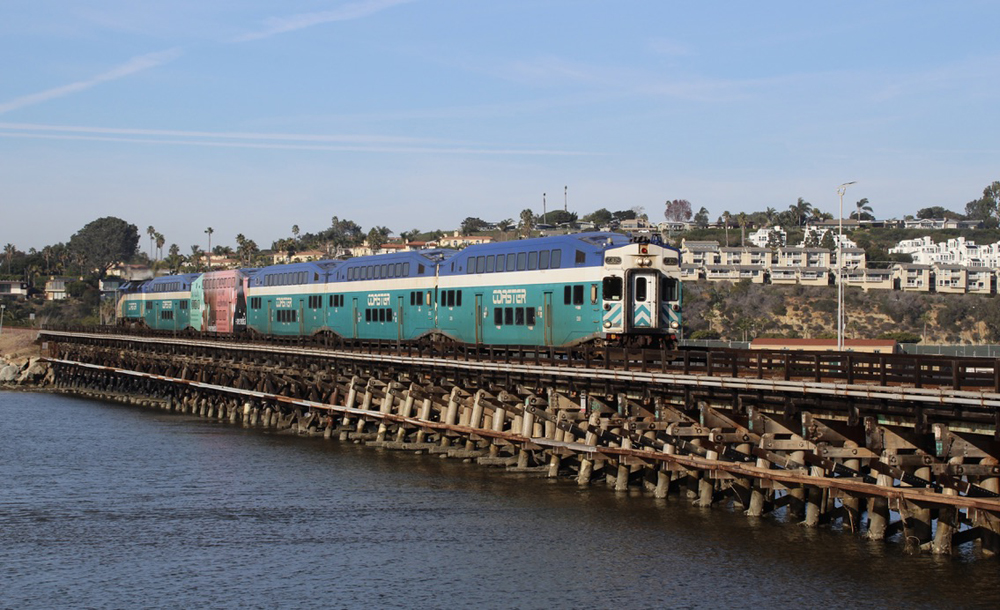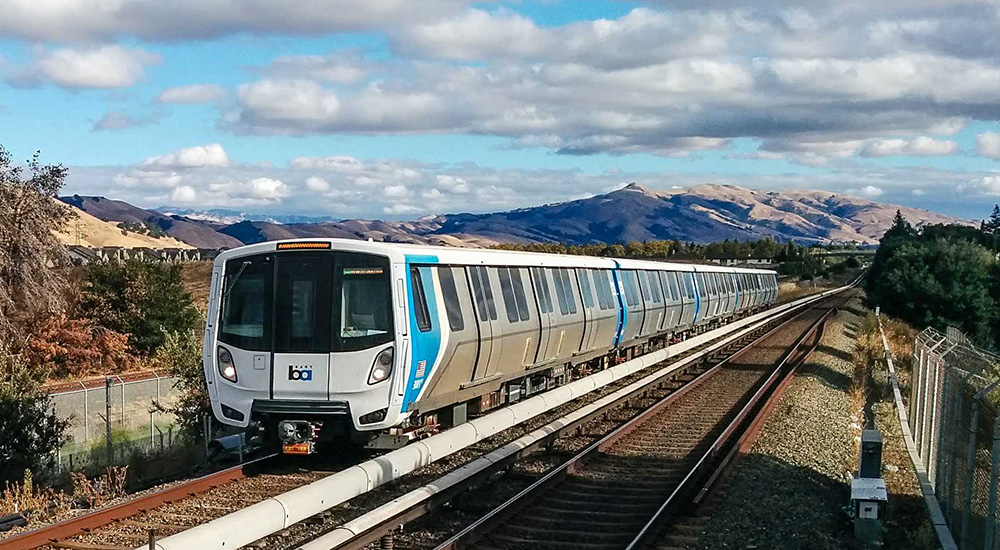1:29 scale, gauge-1 GP30
USA Trains
PO?Box 100
Malden MA 02148
Web site: www.usatrains.com
See your local dealer for price and availability
Plastic model of an EMD GP30; two motors; eight-wheel drive; four traction tires; directional lighting; fan-driven smoke unit; interior cab lighting; detailed cab interior; metal handrails; opening cab doors; hook-and-loop couplers installed, knuckles also supplied; engineer included; minor assembly required; many road names available, some with multiple road numbers for MU operation. Dimensions: 211/2″ long over end beams; 43/16″ wide; 63/16″ tall. In 1:29 scale, this works out to 52′ x 10’1″ x 14’11”. Tractive effort: 2 lb., 10 oz, or the equivalent of about 34 standard freight cars
Pros: Excellent fidelity to prototype; high level of detail; crisp, sharp graphics; excellent operating characteristics; automatic shutdown of smoke unit when empty
Cons: Large cutouts in beam ends to accommodate couplers
USA?Trains’ model is a faithful replica of the original. Our review sample is painted in the black-and-orange livery of the Rio Grande. In comparing it with photos of the prototype, little seems to have been left out, although specific details may vary with road name. All steps and walkways have diamond tread, the sprung trucks are highly detailed, and all handrails are metal. The model features directional lighting (both headlights and marker lights). There is one motor per truck and two traction tires per truck, making the engine a powerful hauler. Electrical pickup is via the wheels and a pair of sliding skates on each truck. Fortunately, the skates are pretty well hidden. In the cab is an engineer and opening doors and windows. Some of the detail parts, like MU connectors, handrails, air hoses, etc., must be installed by the buyer.
Body-mounted hook-and-loop couplers are installed as standard, but USA Trains’ knuckles are also provided. Changing them is a simple matter. There are unprototypically large cutouts in the end beams to accommodate the couplers. More fastidious modelers may want to cover these openings and install more prototypical couplers. However, this will limit the engine’s turning radius, so be sure your track can accommodate an engine with this modification.
Under the locomotive are four switches that control the motors, lights, smoke unit, and sound system. The latter is to be tied into an after-market sound system, as none is supplied with this engine. The speaker is to be mounted in the fuel tank, which has sound holes molded into the bottom.
In operation, the locomotive performs well. At slow speeds, the engine just creeps along. Top speed, at 24V, is not unprototypical. The two motors draw just over two amps at full slip at 24V. There is some distinct gear noise, especially at higher speeds. Incidentally, the locomotive has very low track clearance. If you happen to be using LGB’s rack system, the rack will rub on the bottom of the motor blocks.
All in all, this is another fine engine from USA Trains. If you are modeling standard-gauge railroads from the 1960s through present day, this locomotive will fit in well and provide good service













